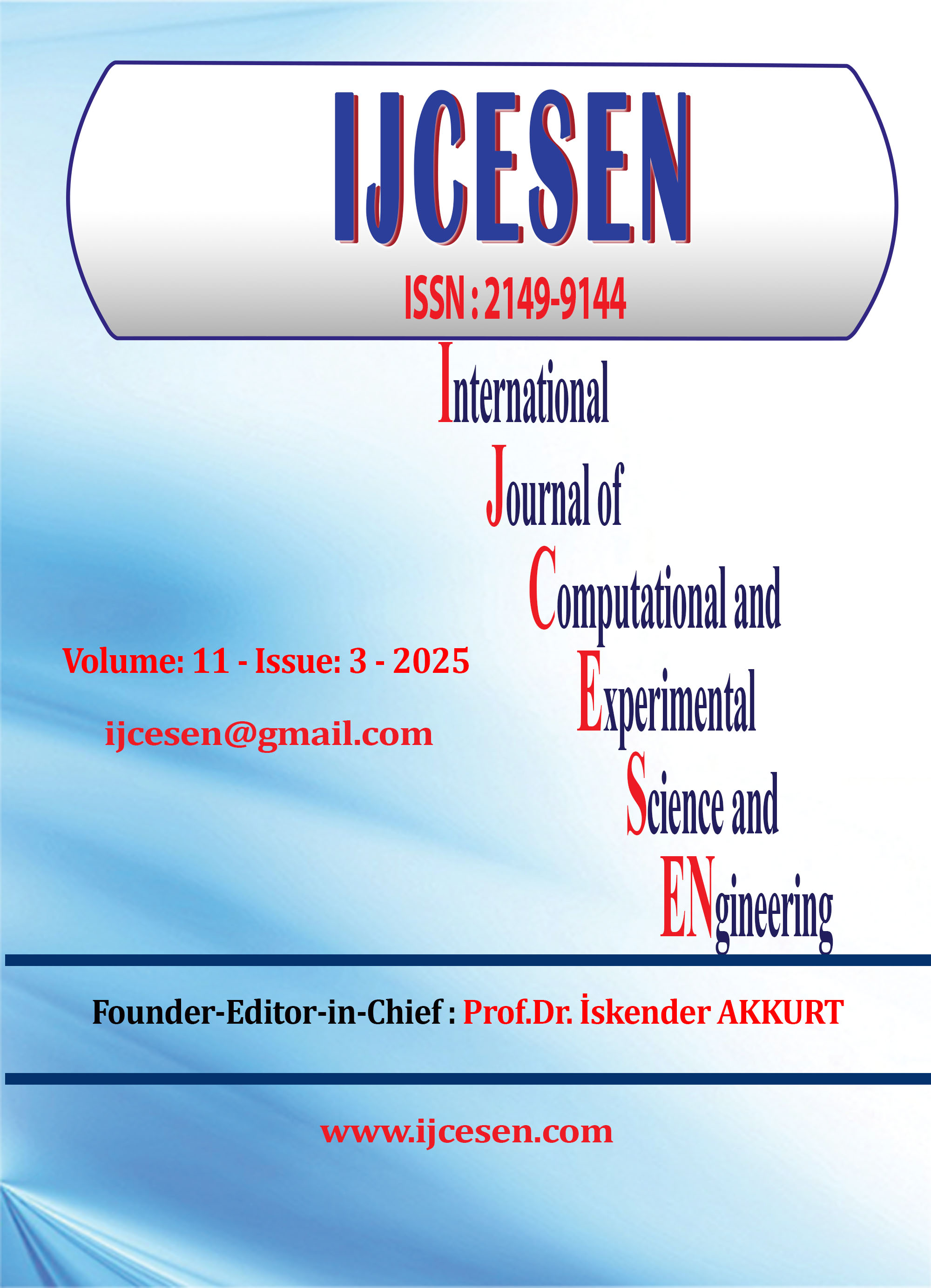Building laws and regulations in the Arab Republic of Egypt as a means to preserve urbanization
DOI:
https://doi.org/10.22399/ijcesen.3631Keywords:
Building laws in Egypt, Urban preservation, Urban sustainabilityAbstract
This study addresses the establishment and development of a Geographic Information System (GIS) aimed at compiling, storing, and managing a comprehensive database encompassing all spatial and descriptive data related to the general master plan, strategic development plan, detailed zoning plans, and officially approved subdivisions, with initial implementation focused on Cairo Governorate.The proposed system seeks to articulate a future vision for urban development at the governorate level, extending down to the individual building or unit. The GIS framework will include a multi-dimensional dataset comprising architectural, legal, regulatory, infrastructural, and socio-demographic information,The objective is to create a unified, interoperable system that allows for real-time approvals, decision-making, and data extraction, based on the pre-integrated and pre-verified datasets, conditions, and regulatory requirements within the system. This would transform decision processes from time-consuming administrative workflows into rapid reviews that enable instantaneous and informed decision-making.The research then shifts its focus to the application of the sustainability principle, through the adoption of digital signature technology by officials across the relevant, supporting, and complementary entities involved in administrative procedures. This approach emphasizes the elimination of printed documents, drawings, plans, or approvals, by establishing a centralized, unified digital system that replaces fragmented and paper-based processes.In doing so, the system would clearly define the roles and responsibilities of each entity, as mandated by legislation or designated decision-makers. Moreover, the platform would be made accessible not only to stakeholders and applicants (request initiators), but also to service providers—including local administrative units, affiliated agencies, and executing entities.By the conclusion of the study, the proposed system aims to contribute directly to enhancing quality of life for all parties involved. When the system has a direct positive impact on the individual's experience and access to services, it fulfills the core objective of the research. Additionally, it serves to eliminate both intentional and unintentional violations or procedural errors committed by service providers (local authorities, relevant agencies, and implementation bodies), while significantly accelerating and streamlining work processes, ensuring real-time performance and decision-m
References
[1]Building Law No. 106 of 1976 and its Executive Regulations and Amendments.
[2]Building Law No. 119 of 2008 and its Executive Regulations and Amendments.
[3]Ismail, A. M. S. (2012). The Use of Green Nanotechnology in Achieving Sustainable Interior Design. Helwan University, Egypt.
[4]Mastery IT. (2010). Mastery Smart Home System: Remote Home Management. Mastery IT Company, Egypt.
[5]Al-Far, A. Q. (2011). An Introduction to the Study of Legal Sciences. Dar Al-Thaqafa Publishing & Distribution.
[6]Ministry of Housing, Utilities and Urban Communities – General Organization for Physical Planning. (2015). Manual for the Preparation of the General Strategic Plan for Egyptian Cities.
[7]Qenawy, A. R. (2017). Community Participation in Urban Planning. Al-Bashir House for Culture and Science, Egypt (1st ed.).
[8]New Developments in Construction. (2020). Social Justice Platform.
[9]Al-Maghazi, A. (2018). Forced Informality: The Clash between the Right to Housing and Building Laws.
[10]Hassan, N. M. (2000). Informational Architecture: A Vision for the Problem of Architectural Creativity in the 21st Century. Proceedings of the Fourth International Architectural Conference, Department of Architecture, Faculty of Engineering, Assiut University.
[11]Issa, H. S. (2010). Sustainable Design Using Building Information Modeling (BIM): Current Capabilities and Future Prospects. Al-Azhar University Engineering Journal (JAUES), 5(6), December.
[12]Youssef, S., & Ismail, A. M. (2009, April 20–23). Economics of Sustainable Architectural and Interior Design. Paper presented at the 9th International Scientific Conference “Environmental Economics and Globalization,” Faculty of Economics and Administrative Sciences, Al-Zaytoonah University, Jordan.
[13]Ahmed, K. A. N. (2010). Technology and Sustainable Architecture in the 21st Century. Hadhramout University.
[14]Evan, M. (2015). Green Building Laws and Regulations: Why Do They Matter and What Is Their Importance? Electronic Journal of Urban Environment, Issue 10.
[15]Al-Tan, J. (2015). Smart Buildings: Not Only Green, but Also Intelligent. Electronic Journal of Urban Environment, Issue 10.
[16]The Role of Community Participation in Activating the Strategic Plans of Cities. (2020). Al-Azhar University Journal, 59(2).
[17]Mahmoud, M. F. (2016). Formulating a System of Mechanisms for Preparing Strategic Urban Plans for Egyptian Cities: A Case Study of Ismailia and Fayoum Governorates. Department of Architecture and Urban Planning, Faculty of Engineering, Suez Canal University.
[18]Zayed, M. A. A. (2003). Urban Planning in the Information Age. Master’s Thesis, Cairo University.
[19]Khalil, M. M. O. (2004). Architecture in the Information Era: Between Globalization and Locality. PhD Thesis, Cairo University.
[20]Ezz El-Din, M. (2004). Technological Development: An Analytical Study of the Impact of Advanced Technology on Architecture in Egypt. Master’s Thesis, Cairo University.
[21]Ismail, A. M. (2006). Smart Architecture and Its Impact on Interior and Exterior Design. PhD Thesis, Helwan University.
[22]Arabi, I. F. A. (2010). Contemporary Trends in Architecture. Master’s Thesis, Cairo University.
[23]Fadel, A. M. M. (2011). Smart Architecture and Its Technological Impact on Design. Master’s Thesis, Cairo University.
[24]Ahmed, M. H. K. (2011). The Impact of Information Technology on the Development of Architectural Thought. Al-Azhar University.
[25]Riad, M. A. (2018). Laws and Regulations Governing Egyptian Urbanization and Their Shortcomings. Journal of Environmental Sciences, Ain Shams University.
[26]Urban Development of Cairo City: Solutions and Challenges.
[27]The Egyptian Cabinet. Retrieved from https://www.cabinet.gov.eg/
[28]Central Agency for Public Mobilization and Statistics (CAPMAS). Retrieved from https://www.capmas.gov.eg/
[29]Ministry of Housing, Utilities and Urban Communities. Retrieved from https://mhuc.gov.eg/
[30]Cairo Governorate. Retrieved from https://www.cairo.gov.eg/ar/pages/default.aspx
Downloads
Published
How to Cite
Issue
Section
License
Copyright (c) 2025 International Journal of Computational and Experimental Science and Engineering

This work is licensed under a Creative Commons Attribution 4.0 International License.





